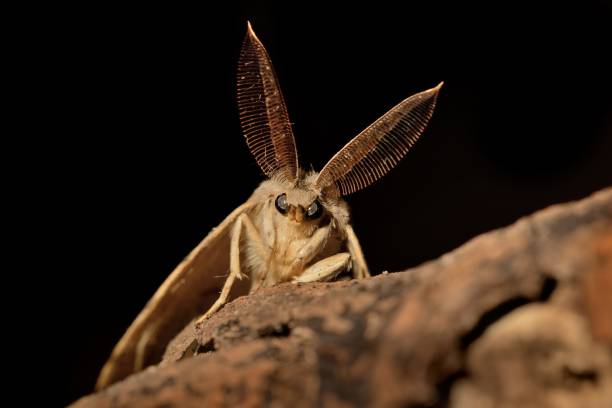Moths, often regarded as the unassuming cousins of butterflies, possess their own unique charm and play a pivotal role in the ecosystem. With a vast array of species, these nocturnal wonders contribute to the rich tapestry of our natural world. In this piece, we will embark on a detailed journey through the intricate lives of moths, from their varied habitats to their surprisingly short lifespans.
Understanding Moths
Moths, along with butterflies and skippers, belong to the lepidopteran superfamily. Originating from a common ancestor, their name “Lepidoptera” is deeply rooted in Greek etymology, with ‘leps’ meaning scale and ‘pteron’ indicating wing. Interestingly, while the majority of moths boast scaled wings, certain species, like some found within the Geometridae family, deviate from this norm.

Boasting a staggering count of over 160,000 species distributed across 135 moth families, the size of these insects varies immensely. From diminutive moths measuring a mere 1.5-2.0 mm to the gigantic Atlas moth with a wingspan touching 25 cm, their diversity is truly astounding.
Moth Behavior: Nocturnal Mysteries
Contrary to popular belief, not all moths strictly adhere to a nocturnal lifestyle. While many are indeed night-dwellers, certain species are crepuscular, limiting their activity to the twilight hours of dawn or dusk.
The behavior of moths is intricate; while males often take flight in their quest for mates, females might remain stationary unless compelled by external factors like wind or predation.
Their methods of attracting mates are as varied as their species: from emitting pheromones to generating sounds and vibrations. Some, like the ghost moth, employ the art of camouflage, foregoing signals altogether.
Life Stages of a Moth: A Dynamic Journey
Embarking on the journey of a moth’s life, it’s clear that their lifespan is segmented into distinct phases, each bringing its own challenges and transformations.
The Egg Stage
Initiating the cycle, a female moth might deposit between 50 to 60 eggs. These eggs, sensitive to environmental conditions like temperature and humidity, usually hatch within a 5-10 day window.
The Larval Stage
The duration of this stage is not set in stone. While some larvae might metamorphose into a cocoon within a couple of months, others can bide their time for up to two years. Recognized as the most voracious phase, these larvae can wreak havoc by feeding on diverse materials, from clothes to crops.
The Pupal Stage
Transitioning from larva to adult, the pupal stage might last from 8 days to nearly two months, with temperature playing a crucial role in its progression.
The Adult Stage
As moths reach adulthood, their primary focus shifts to reproduction. Interestingly, many adult moths neither feed nor drink. Some might have an adult lifespan of mere days, while others can endure up to ten months.
Factors Influencing Lifespan
Moth lifespans exhibit a considerable range, influenced by both internal factors and external conditions. Certain Arctic species, with their harsh climates and limited food sources, might adopt a two-year life cycle, while some desert-dwelling moths can remain dormant for up to seven years, awaiting the right conditions for their host plants to flourish.
Conversely, in warmer regions, some species might undergo several short-lived generations within a year.
Moths and Domestic Intrusion
While wild moths seldom find prolonged refuge within homes, there exist species that have adapted to a completely domestic life cycle. The carpet moth and the pantry moth, named for their preferred feeding sources, are prime examples. These residential species not only complete their life cycles within human dwellings but also proliferate, leading to infestations.
Why Such Limited Lifespans?
Moths, in their delicate splendor, face numerous challenges. Their sensitivity to light, coupled with a myriad of predators, often shortens their existence. They find themselves constantly at odds with their environment, from battling inclement weather to eluding predators. These factors combined make their brief lifespans a testament to the rigors of nature.
The Significance of Moths
Beyond the damage they inflict on clothes or crops, moths are essential components of our ecosystem. Their role as pollinators is vital for several plants. Moreover, their presence or absence can often serve as an indicator of the health of an environment.
Conclusion
Moths, with their myriad species and intricate behaviors, are more than mere pests. They are nature’s enigma, carrying tales of evolution, survival, and ecological significance. As we learn deeper into their world, it becomes evident that there’s much more to these nocturnal wonders than meets the eye.

Editorial Staff
Our writers, editors, content managers, and SEO specialist. We all take part in crafting amazing articles. We spend hours ensuring that each article is based on facts, researched, and thorough. You'll never want to click the back button to look for more answers other than here!
